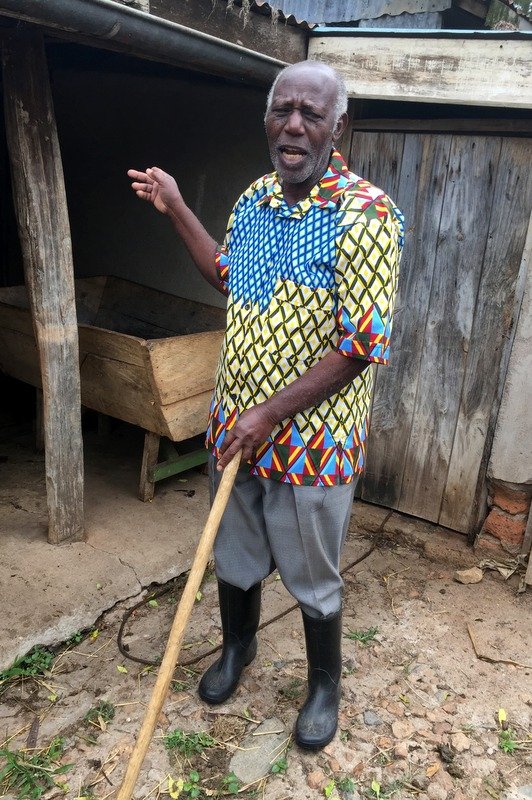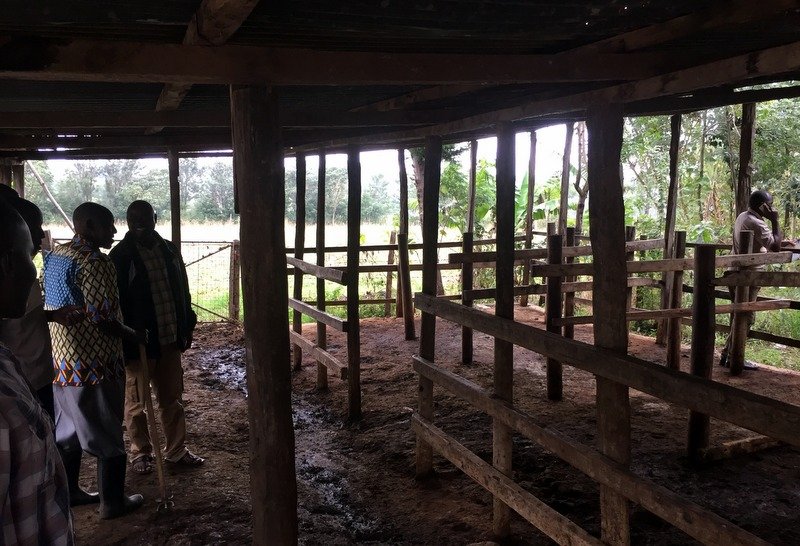Dairy Diversification from Feed to Market for Farmers
The Nuru Kenya (NK) rural livelihoods team is leading a “feed to market” effort that will transform the dairy livelihoods of thousands of farmers in Kuria East and Kuria West. Nuru farmers in Kenya have traditionally kept a few head of cattle at their household for draft power, as capital assets, and for subsistence milk production. Generally, the dairy cattle are of poor genetic stock and animal husbandry practices are inadequate to reach milk yield potential. Thus, the NK team has built a suite of “feed to market” activities that will shepherd Nuru farmers from dairy subsistence to dairy commercialization and build sustainable income streams for farmer households.
The NK diary program was initiated in July 2017 with 200 of NK’s best performing farmers. These 200 farmers paid their enrollment fee and agreed to start demonstration plots of hybrid brachiaria feed grass, called Cobra. Increasing milk yields starts with feed and Cobra grass is an excellent source of fast growing, high protein and easily digestible animal feed. For the last nine months the NK team has been working tirelessly to train the original 200 farmers on best practices in feed management and animal husbandry, register qualified farmers and their Nuru-supported farmer organization (“cooperatives” in Kenya) for program expansion, build relationships between cooperatives and value chain actors, and build the capacity of Nuru dairy farmers to transition from subsistence to business.

Kevin Yongo, Rural Livelihoods Program Manager maps the local Dairy Value Chain with colleagues to continuously improve program activities and outcomes.
The interest and motivation of Migori County farmers to participate in the NK dairy commercialization program has proliferated since inception. To date, nine Nuru-supported cooperatives and 421 Nuru farmers are participating in the four-step “feed to market” value chain approach to dairy commercialization. Step 1 for Nuru dairy farmers is paying the enrollment fee of on average 350 Ksh ($3.50 USD) to their cooperative and establishing their Cobra grass plots around and near their households.

Rebecca Mulebe explains how to make hay from her Cobra Grass plot planted in 2017 as a lead farmer for Maeta Farmer Cooperative (March 2018).
Step 2 requires farmer participation in the genetic improvement of their cow stock with artificial insemination or an “improved cow breed loan” through the cooperative. Improving the genetic stock of dairy cows takes time to realize full impact due to the natural life-cycle and lactation cycle of a single cow. Thus, Nuru created two opportunities for qualified farmers: 1) a loan for a 2.5 year old hybrid dairy cow with 15-20 liter per day potential, or 2) artificial insemination (AI) services, which require 2.5 years before calving an improved animal. Step 3 delivers training and extension of best management practices (BMP) to enrolled dairy farmers that substantially increase household milk yields and the commercialization of milk through the cooperatives.
Finally, step 4 culminates with farmers generating income from the sales of extra milk to regional buyers through their cooperatives. Formal relationships with numerous local and regional value chain actors are being established with each participating cooperative to ensure market access is sustained through a community-led business. A farmer who has completed these four steps is considered retained in the program, if they continue to sell milk to the FO for at least 180 days per year and properly manage their dairy cattle (BMP adoption).

Obadia Munama, champion dairy farmer from Kehancha Farmers Cooperative shares his dairy experiences.

Obadia Munama walks the Nuru Rural Livelihoods team through his improved animal housing and feeding station.
Program Performance (end of Q1 2018)
NK has built out an efficient performance monitoring system to track the progress and performance of the the dairy program from inception to farmer retention. Current progress provides a snapshot of the program’s operational effectiveness since the start of 2018:
| Indicator | Updated | Target (end of Q4 2018) | Actual |
| # of Nuru-supported Farmer Organizations enrolled in dairy “feed to market” program | Quarterly | 4 | 9 |
| # of Nuru Farmer Households enrolled in dairy “feed to market” program | Quarterly | 319 | 421 |
| # of formal buyer relationships (value chain partnerships) | Quarterly | 4 | 1 |
| % of farmers adopting at least 50% of improved dairy management practices | Q1 2019 | 75% | n/a |
| % increase in milk yield from baseline (1.8 L/day) | Q1 2019 | 50% | n/a |
| % of farmers generating extra income from milk sales | Q1 2019 | 50% | n/a |
The Vision
NK has shown exceptional servant leadership and acumen in developing and implementing their dairy program and have set a strong foundation for building diversified and sustainable livelihoods for Nuru farmers. NK and the cooperatives they support are already making progress towards their 2020 goal: a thriving dairy market ecosystem in Migori County. An ecosystem that will bring socio-economic benefits to communities and de-risk the investment landscape for a high growth agricultural sector in rural Kenya.



